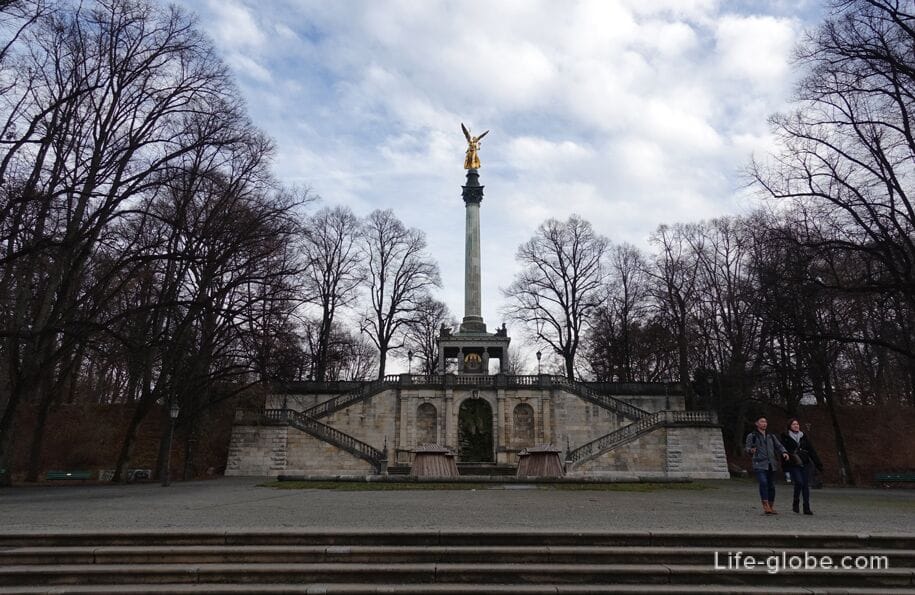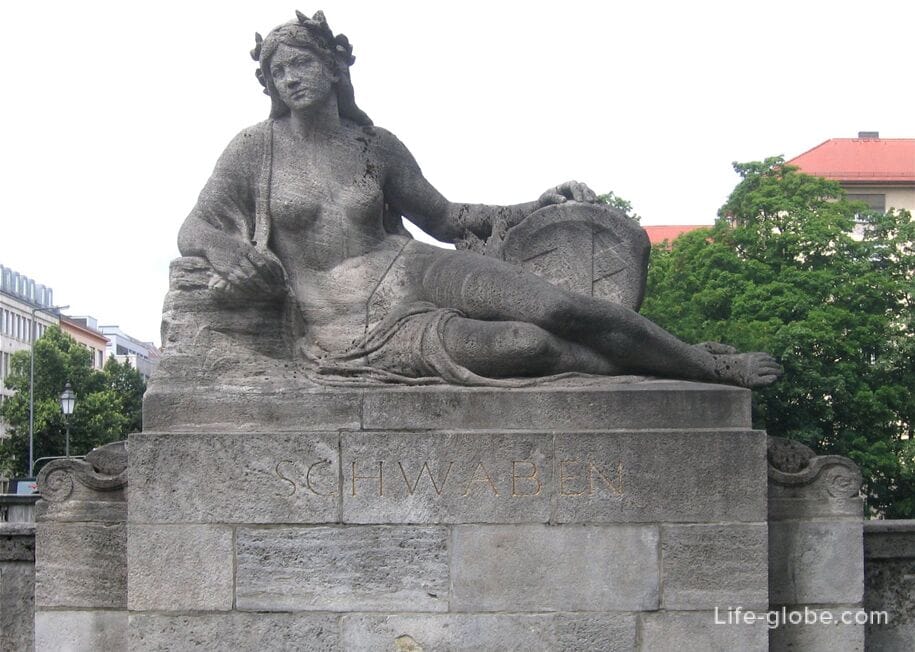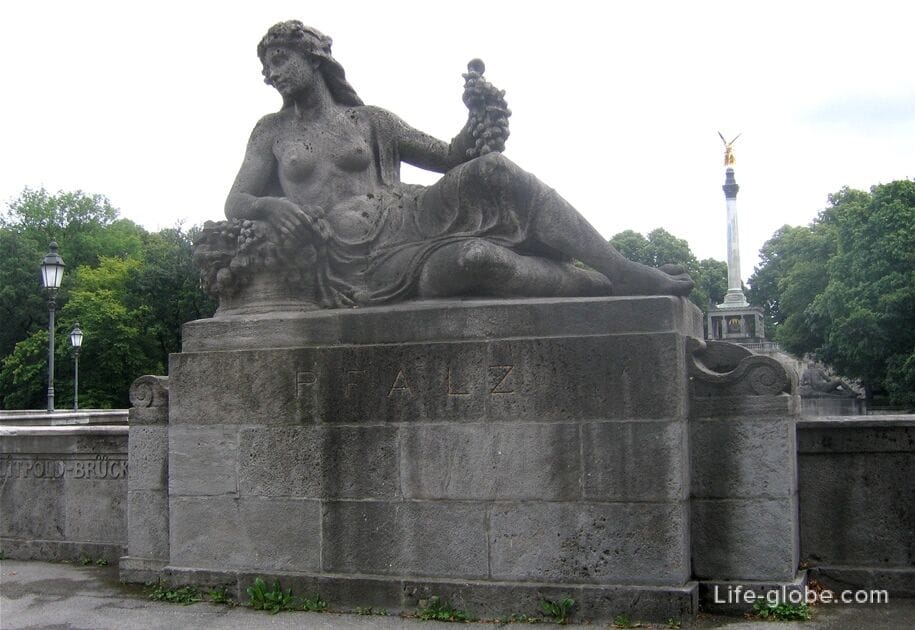
The Luitpold Bridge (German: Luitpoldbrücke), also known as the Prince Regent Bridge (Prinzregentenbrücke) is one of the bridges over the Isar River in Munich.
The bridge connects the center of Munich (Altstadt-Lehel), located on the west side of the river, with the districts of Au-Haidhausen and Bogenhausen, located on the east side of the river.
The bridge was originally built in 1891, according to the ideas of the architect Friedrich von Tiersch, as part street of the Prinzregentenstraße and paid for by the Prince Regent Luitpold from his own funds.
The bridge is named after the Bavarian Prince Regent Luitpold Karl Joseph Wilhelm.
Initially, the bridge was steel. After the September floods in 1899, the bridge collapsed. In 1901, when financing Luitpold was built a new stone bridge, which still exists today. The finish on the piers of the bridge was completed in 1903. September 29, 1901 the bridge was transferred to Munich.
Today stone bridge Luitpold consists of a flat three-section arch, which covers almost 63 meters of the river. On the bridge are two carriageways of the road and the sidewalk, one on each side of the bridge.
On the eastern side, the bridge is an integral continuation of one of the main streets of Munich - Prinzregentenstrasse, and on the western side, the Angel of Peace memorial (Friedensengel) rises above the bridge, consisting of a column with a monument and a small memorial temple, as well as a terrace that is an observation deck.
A view of the bridge Luitpold and street Prinzregentenstrasse from the observation deck of the angel world

View of the memorial angel of peace

Luitpold the bridge is decorated with four large stone sculptures located on the bridge on both banks of the river symbolizing the four Bavarian parts:
- the figure of the hunter, symbolizing Bavaria, namely the Old part of Bavaria (Upper and lower Bavaria). Sculpture created by Hermann Hahn;

- a female figure with the arms, symbolizing for Swabia. The work of sculptor Erwin Kurtz;

the figure of a fisherman, symbolizing Franconia (the Frankia). Created By Balthasar Schmitt;

- a female figure with grapes, symbolizing the Palatinate. Created August Drummon. The Palatinate is not part of Bavaria since 1946.
